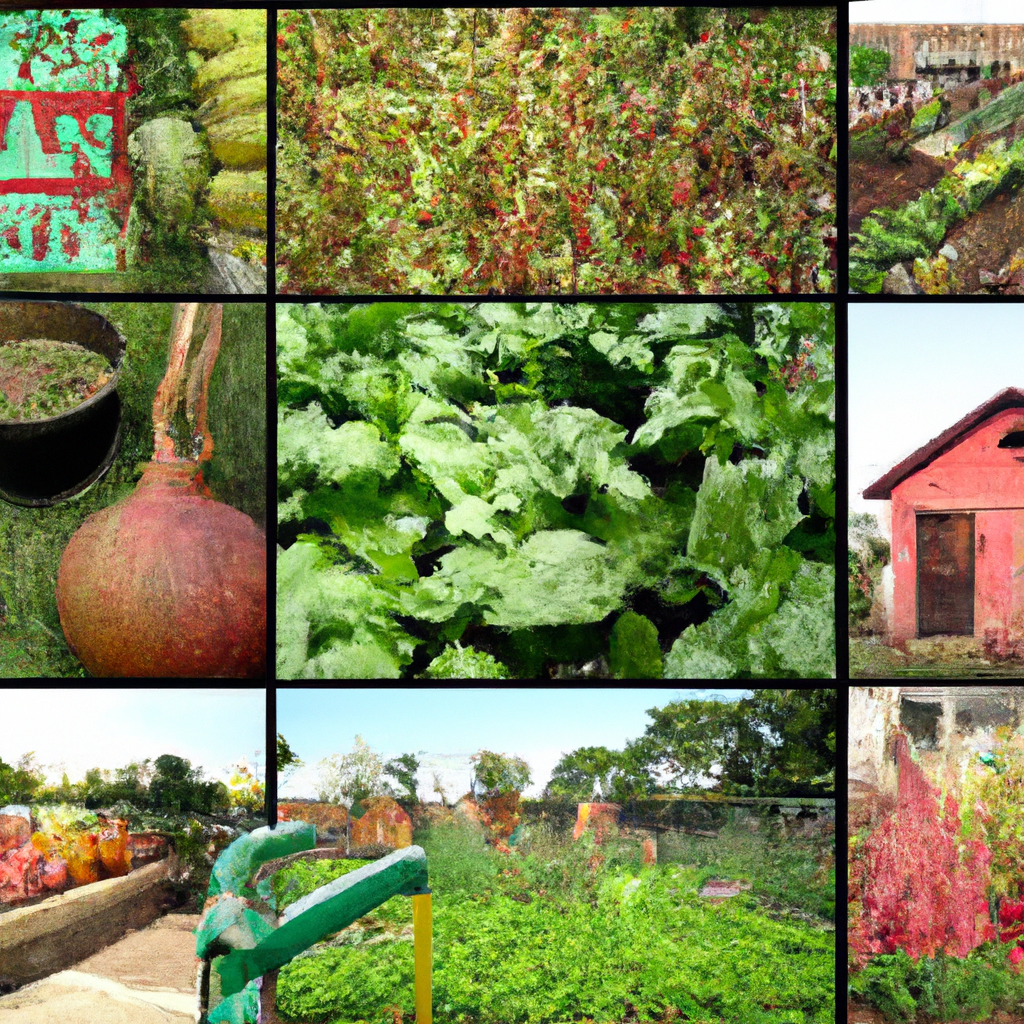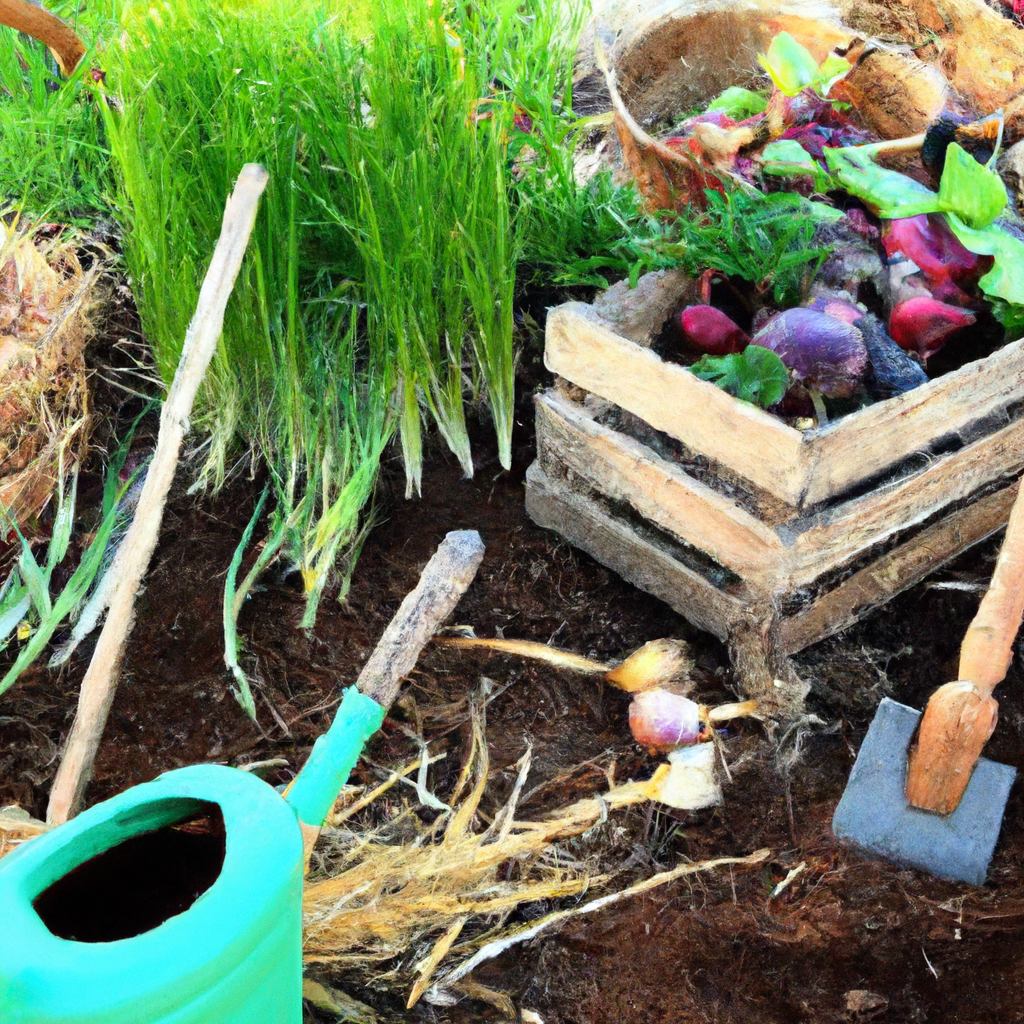
Ready to embark on your urban farming journey? Look no further! This beginner’s guide is here to equip you with all the essentials you need to know to get started with urban farming. Whether you have a tiny balcony or a spacious backyard, this article will provide you with valuable tips and tricks for growing your own fresh produce, utilizing small spaces efficiently, and contributing to a greener, more sustainable environment. From selecting the right plants to understanding the basics of composting, this guide will empower you to become an urban farmer and reap the rewards of this fulfilling and environmentally-friendly hobby. Get ready to turn your urban space into a thriving oasis of greenery and abundance!

Choosing a Location
When starting your urban farming journey, one of the first things to consider is the location of your farm. Evaluating the available space is crucial, as it will determine the size and scale of your farming operation. Look for areas that have enough room to accommodate your crops and gardening equipment.
Another important factor to consider when choosing a location is sunlight exposure. Most crops require ample sunlight to grow and thrive. Analyze the different areas of your property to determine which spots receive the most sunlight throughout the day. This will help you identify the optimal areas for planting your crops.
In addition to sunlight, the quality of the soil is a key consideration. Soil that is rich in organic matter and nutrients will provide a fertile environment for your plants. It is advisable to conduct a soil test to assess its quality. If your soil is lacking in nutrients, you may need to amend it with compost or other organic matter to improve its fertility.
Lastly, assess the drainage of your chosen location. Proper drainage is essential to prevent waterlogging, which can lead to root rot and other plant diseases. Ensure that the area has adequate natural drainage or consider implementing drainage systems if needed.
Selecting Crops
Choosing the right crops for your urban farm is crucial for a successful harvest. It is important to research the specific requirements of each crop before making a selection. Some plants thrive in specific climate conditions, while others may be more adaptable.
Consider the suitability of your local climate when selecting crops. Different plants have varying temperature and humidity preferences, so choose crops that are well-suited to your area’s climate. This will increase the likelihood of a bountiful harvest.
Opt for high-yield crops that produce a substantial amount of produce in a small space. Maximizing your harvest is especially important in urban farming, where space can be limited. Selecting crops that have a high yield ensures that you make the most of your available planting area.
Additionally, choose plants that are space-efficient, such as those with upright growth habits or those that can be trained to grow vertically. Utilizing space efficiently is crucial in urban farming, where every square foot counts. Vertical gardening techniques can help you make the most of limited space while still enjoying a productive harvest.

Vertical Gardening
Vertical gardening is an excellent technique for maximizing space in urban farming. By utilizing vertical space, you can grow more plants in a smaller footprint. There are several ways to implement vertical gardening in your urban farm.
Install trellises and supports for vining crops. Many vegetables, such as tomatoes and cucumbers, have a natural tendency to grow vertically. By providing them with sturdy trellises or supports, you can guide their growth upwards, freeing up ground space for other plants.
Consider container gardening for vertical growing. Many plants can thrive in containers, and vertical stacking of containers allows for multiple layers of growth. This method is particularly useful for growing herbs, lettuce, and strawberries. Hang containers from walls or use vertical planter systems to make the most of your available space.
Utilize hanging baskets for trailing plants. Hanging baskets are perfect for plants that cascade downwards, such as trailing flowers or herbs. Hang them from railings, hooks, or walls to create a beautiful display while utilizing vertical space.
By utilizing these vertical gardening techniques, you can make the most of your urban farming space and achieve a productive and beautiful garden.
Container Gardening
Container gardening is an ideal option for urban farming, as it allows you to grow plants in limited spaces, such as balconies, rooftops, or even small patios. To ensure success with container gardening, consider the following tips:
Select appropriate containers for your plants. The size and material of the containers are important factors to consider. Choose containers that are large enough to accommodate the root system of your plants and provide room for growth. Additionally, ensure that the containers have drainage holes to allow excess water to escape.
Proper drainage is essential for container gardening success. Without adequate drainage, the soil can become waterlogged, leading to rotting roots and plant failure. Place a layer of gravel or small stones at the bottom of the container to enhance drainage. This will help prevent water from sitting at the bottom of the container and causing damage to the roots.
Choose lightweight soil mixes specifically formulated for container gardening. These mixes provide excellent drainage and aeration, allowing roots to thrive. Avoid using regular garden soil, as it tends to be heavy and may not provide the necessary drainage for container plants.
Regular watering is crucial for container plants, as they tend to dry out more quickly than plants grown in the ground. Monitor the moisture levels of the soil and water accordingly. It is better to water deeply and less frequently than to water lightly and frequently, as deep watering encourages healthy root growth.
With proper container selection, good drainage, lightweight soil mixes, and sufficient watering, container gardening can be a successful and rewarding method for urban farming.

Composting
Composting is an integral part of sustainable urban farming. It not only helps reduce waste but also provides nutrient-rich organic matter for your plants. Follow these steps to start your composting journey:
Learn about the composting process. Composting is essentially the decomposition of organic materials by microorganisms into a rich and crumbly product called compost. Familiarize yourself with the basics of composting, including the balance of carbon-rich (browns) and nitrogen-rich (greens) materials, as well as the ideal moisture and oxygen levels for the compost pile.
Identify suitable organic materials for composting. Kitchen scraps, such as fruit and vegetable peelings, coffee grounds, and eggshells, are excellent additions to the compost pile. Yard waste, such as leaves, grass clippings, and small branches, can also be composted. Avoid adding meat, dairy products, and oily materials, as they can attract pests and disrupt the composting process.
Build or purchase a compost bin. Compost bins help contain the organic materials and provide a controlled environment for decomposition. You can choose from a variety of compost bins, including traditional open piles, enclosed bins, or even vermicomposting systems that utilize worms for decomposition. Consider the space you have available and your specific composting needs when selecting a bin.
Maintain the composting process. Proper maintenance is essential for successful composting. Turn the compost pile regularly to ensure aeration and promote decomposition. Keep the compost moist but not overly wet, as excess moisture can cause the pile to become anaerobic. Monitor the temperature of the compost pile, as the heat generated during decomposition helps break down the materials more efficiently.
By embracing composting, you can reduce waste, create nutrient-rich soil amendments, and foster a more sustainable urban farming practice.
Watering Techniques
Efficient watering techniques are key to maintaining a healthy and productive urban farm. Consider the following methods to optimize your watering practices:
Use drip irrigation systems. Drip irrigation delivers water directly to the plant’s root zone, reducing water loss through evaporation and minimizing weed growth. This method ensures that the plants receive the water they need without excessive watering. Install drip irrigation systems in your urban farm to conserve water and promote efficient plant growth.
Consider rainwater harvesting. Collecting and utilizing rainwater is an excellent way to supplement your watering needs. Set up rain barrels or other rainwater collection systems to capture rainfall from rooftops and other surfaces. Use this collected water to irrigate your crops, reducing your reliance on municipal water sources.
Utilize self-watering containers. Self-watering containers have built-in reservoirs that supply water to the plants as needed. This system ensures that the plants receive consistent moisture without the risk of overwatering. Use self-watering containers for your potted plants to simplify your watering routine and promote healthy growth.
Avoid water wastage by practicing smart watering habits. Water your plants during the early morning or late evening to minimize evaporation. Direct the water flow directly to the plants’ root zones, rather than watering the surrounding areas. Regularly monitor the moisture levels of the soil to ensure that you’re providing the right amount of water.
By implementing these watering techniques, you can conserve water, promote plant health, and cultivate a thriving urban farm.

Pest Management
Managing pests is an important aspect of urban farming, and taking an organic approach is both environmentally friendly and safer for you and your plants. Consider the following methods for effective pest management:
Implement organic pest control methods. Avoid using chemical pesticides that can harm beneficial insects and contaminate your produce. Instead, focus on natural solutions, such as introducing pest-repelling plants, using insecticidal soaps or oils, or applying biological control agents like nematodes or ladybugs.
Attract beneficial insects. Encourage the presence of beneficial insects that naturally prey on pests by planting flowers and herbs that they find attractive. Ladybugs, lacewings, and praying mantises are just a few examples of beneficial insects that can help keep pest populations in check.
Practice crop rotation. Crop rotation is an effective method for reducing pest populations and preventing the buildup of soil-borne diseases. Avoid planting the same crops in the same area year after year, as this can attract pests. Instead, rotate your crops to different areas of your urban farm to disrupt pest cycles and promote healthier plants.
Use physical barriers to protect your plants. In situations where pest pressure is high, such as when dealing with birds or larger animals, physical barriers can be an effective defense. Install fences, netting, or row covers to prevent pests from accessing your crops.
By adopting these organic pest management techniques, you can cultivate a healthy and thriving urban farm while minimizing harm to the environment.
Harvesting and Storage
Knowing when and how to harvest your crops is essential to maximize flavor, nutrition, and shelf life. Follow these guidelines for successful harvesting and proper storage:
Determine the optimal harvesting time for each crop. Different plants have distinct signs indicating when they are ready for harvest. Pay attention to factors such as color, size, and texture to determine when your crops are at their peak. Harvesting too early or too late can affect the quality and flavor of your produce.
Use appropriate tools for harvesting. Invest in a set of garden shears, scissors, or pruning knives to ensure clean and precise cuts. Avoid using your bare hands or improper tools, as this can damage the plants or cause unnecessary bruising.
Properly clean and store your harvested produce. After harvesting, clean off any dirt or debris from the fruits and vegetables. For leafy greens, remove any damaged or wilted leaves. Store your produce in clean and well-ventilated containers. Some crops, such as root vegetables, can be stored in a cool and dark area, while others, like delicate greens, may require refrigeration to maintain freshness.
Consider preserving techniques to extend the lifespan of your harvest. Canning, freezing, and drying are popular methods of preserving produce. Research the appropriate preservation techniques for the specific crops you have harvested to ensure long-term availability of your homegrown produce.
With proper harvesting techniques and appropriate storage methods, you can enjoy the fruits of your urban farming labor for an extended period and avoid unnecessary food waste.

Seasonal Considerations
Seasonal considerations play a vital role in urban farming. Make sure to plan your crops and gardening tasks to maximize your harvest throughout the year. Consider the following factors:
Plan crop rotation for continuous harvest. Rotate your crops to ensure that you have a variety of plants growing throughout the year. This not only helps control pests and diseases but also ensures a steady supply of fresh produce. Research the ideal planting and harvesting times for each crop and create a schedule to follow.
Protect your crops from extreme weather conditions. Extreme temperatures, strong winds, heavy rains, and frost can all impact the health and productivity of your plants. Consider installing protective covers, shade cloths, or windbreaks to shield your crops from adverse weather conditions.
Adjust your planting schedule according to seasonal changes. Different crops have different temperature requirements for germination and growth. As the seasons change, adjust your planting timetable to ensure that the crops you’re growing are appropriate for the current weather conditions.
Consider maintaining a greenhouse if needed. A greenhouse provides a controlled environment where you can grow crops throughout the year, regardless of the external weather conditions. If you live in an area with harsh winters or limited growing seasons, investing in a greenhouse can significantly extend your farming capabilities.
By accounting for seasonal variations and implementing appropriate strategies, you can achieve a more reliable and continuous harvest in your urban farm.
Connecting with the Community
Urban farming not only benefits you but also provides an opportunity to connect with your local community. Consider the following ways to engage and share your passion for urban farming:
Join local gardening associations or community gardening groups. These organizations often provide resources, workshops, and networking opportunities for urban farmers. You can learn from experienced growers, exchange tips and advice, and keep up-to-date with the latest urban farming trends in your area.
Participate in farmers’ markets. Farmers’ markets are a great platform to showcase and sell your homegrown produce. Engage with customers, share your farming practices, and establish relationships with local consumers who value fresh and locally grown produce.
Share excess produce with neighbors, friends, or local food banks. If you find yourself with more produce than you can consume, consider donating or sharing it with others in need. This fosters a sense of community and promotes the benefits of urban farming to a wider audience.
Educate and inspire others about urban farming. Host workshops or give presentations to educate others about the benefits and techniques of urban farming. By sharing your knowledge and experiences, you can inspire others to embark on their own urban farming journeys.
Connecting with the community not only enriches your urban farming experience but also helps create a network of like-minded individuals who are passionate about sustainable agriculture.
By following the tips and techniques outlined in this comprehensive article, you’ll be well-equipped to start and maintain a successful urban farm. From choosing the right location to connecting with the community, urban farming offers endless possibilities for growing your own fresh produce, embracing sustainability, and fostering a deeper connection with nature. Enjoy your journey into urban farming and reap the rewards of a flourishing and abundant farm right in the heart of the city.





